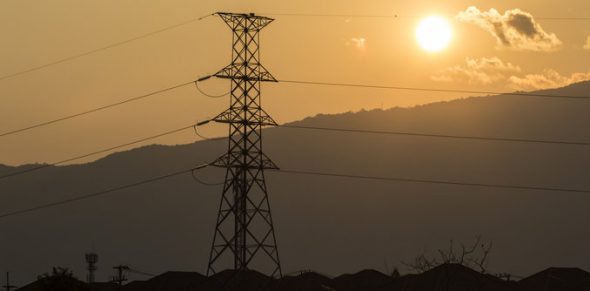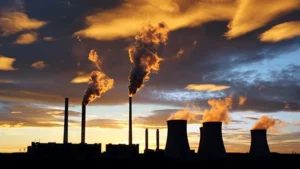
The Australian government is reviewing our electricity market to make sure it can provide secure and reliable power in a rapidly changing world. Faced with the rise of renewable energy and limits on carbon pollution, The Conversation has asked experts what kind of future awaits the grid.
Australia’s National Electricity Market (NEM) is under review following the state-wide blackout that hit South Australia in September.
The review, led by Chief Scientist Alan Finkel, will “develop a national reform blueprint to maintain energy security and reliability”.
Importantly, the Council of Australian Governments (COAG) specifically agreed that the review would consider Australia’s commitment under the Paris climate agreement, and how climate and energy policy can be integrated.
Before we consider how the NEM might need to change, it is important to understand how it came about.
State responsibility
Electricity supply began as a state responsibility. Originally, state-based utilities owned and operated the entire supply chain, from generation to transmission, distribution and retail. With the exception of the Snowy Hydro Scheme, there were no interstate transmission lines.
Accessibility and affordability were (and still are) key concerns for the states. As such, electricity prices were equal for all citizens, irrespective of their location or the actual cost of bringing electricity to them. This is still partly reflected in network tariffs today.
In the late 1980s, concerns about rising costs to government, but also a worldwide ideological move towards privatisation of public services, drove a shift away from publicly owned utilities. This began with a New South Wales inquiry, which found that NSW could avoid billions of dollars in new investment by connecting its network with Victoria.
This set the scene for the development of a more interconnected grid and more general reform. In particular, this was followed by a report from the former Industry Commission in 1991 and the Hilmer Review on National Competition Policy in 1993. These reports were dominated by market logic. They argued that competition would make the system more efficient.
Governments specifically agreed to reforms that would lead to a fully competitive national electricity market. This involved breaking up and selling the three layers of the electricity sector: generation, networks and retail.
The network businesses were seen as natural monopolies, and were to be regulated as such. Generators and retailers were to compete within their own layer, increasing efficiency and keeping prices down.
The national system
Following these preparatory measures, the state and federal governments agreed to pass the National Electricity Law (NEL) under a cooperative national arrangement. This provided the legal basis to create the National Electricity Market (NEM). The NEM is the national electricity market governed by the NEL and includes the wholesale markets as well as network regulation.
In 2001, the state and federal governments established the Ministerial Council on Energy with the broad aim of overseeing and coordinating national energy policy. In 2002, the council commissioned an independent review of energy markets, which highlighted many deficiencies, including governance and regulation.
The review found that the state-based regulators’ responsibilities overlapped with those of the national regulators and led to costly inconsistencies. It also found that greenhouse policy responses were “ad hoc and poorly targeted”.
The ministerial council subsequently proposed a package of reforms. This led to the formation of the Australian Energy Market Commission for developing market rules, and the Australian Energy Regulator for enforcing them, which governments endorsed through the Australian Energy Market Agreement.
This agreement contains a commitment to reducing greenhouse gas emissions. However, this remained outside the National Electricity Objective, which was introduced in 2005 and is the highest point of reference for policy setting. The National Electricity Objective is to:
…promote efficient investment in, and efficient operation and use of, electricity services for the long-term interests of consumers of electricity with respect to price, quality, safety, reliability and security of supply of electricity; and the reliability, safety and security of the national electricity system.
Parallel to these regulatory developments, the states participating in the market became increasingly intertwined. Five new interconnectors were added between 1990 and 2006.
The competitive layers of the industry also began a period of consolidation, leading to the emergence of the so-called “gentailers”. The wholesale market is now dominated by three gentailers (Origin, AGL and Energy Australia), which collectively supply 71% of all retail customers.
The new review
Shortly after the blackout in South Australia, Federal Energy and Environment Minister Josh Frydenberg called for harmonisation of state renewable energy policies, and announced the latest review.
The Finkel Review is a review into the “security and reliability” of the NEM. However, its scope is wide enough to allow for a fundamental rethink of the role of the electricity sector in addressing climate change.
The blackout provides a great example of the kind of challenge the NEM will face in the future. On one hand, climate policies, especially the RET and state-based renewable energy goals, put pressure on the networks and influence the wholesale electricity market.
On the other hand, climate change is expected lead to more frequent and increasingly severe storm events, such as the one that destroyed transmission towers in South Australia. Networks, markets and their governance framework under the NEM aren’t necessarily prepared for these changing conditions.
As shown by the 2002 review, the overlap of state energy policies and ad hoc climate policies is not a particularly new phenomenon. But market governance frameworks have so far kept climate policies separate from the narrow efficiency concerns of the electricity market and network regulation.
Clearly, in the age of climate change, the NEM and its regulatory and institutional frameworks will need to take account of these new and increasing climate mitigation and adaptation pressures.
Recently, South Australian Energy Minister Tom Koutsantonis called for the federal government to “get serious about bringing climate policy and energy policy together”.
With the energy and environment portfolios combined in some governments (including now the federal one), perhaps the Finkel Review can support a convergence of climate and energy policy on a national level.
Source: The Conversation. Reproduced with permission.







